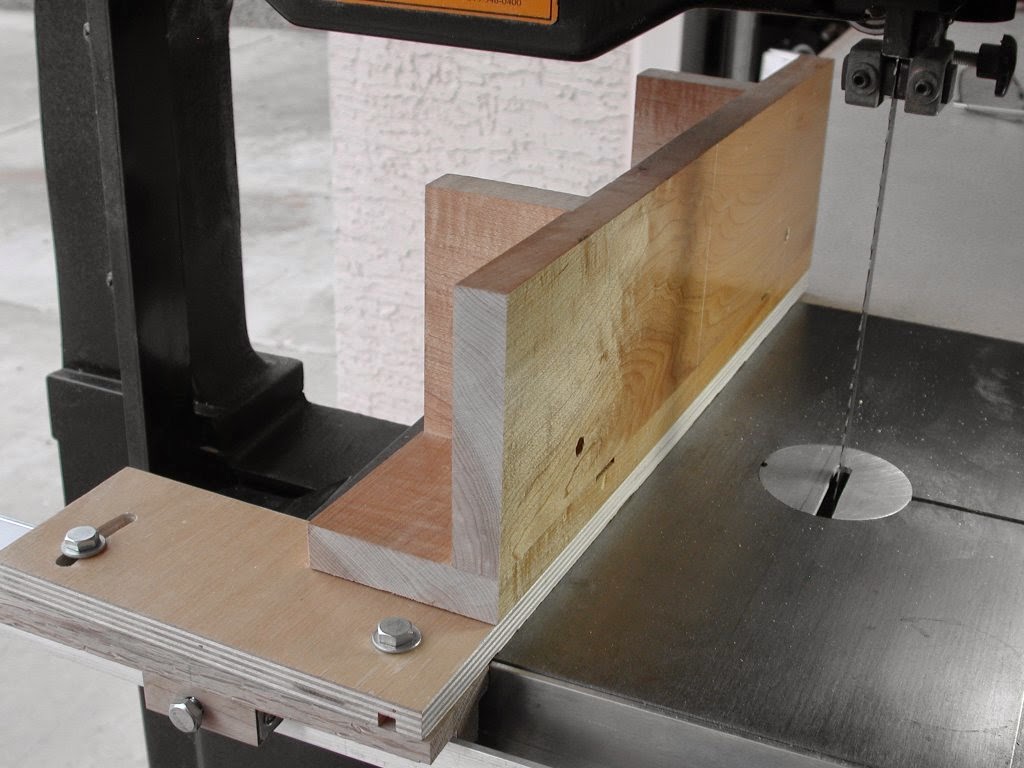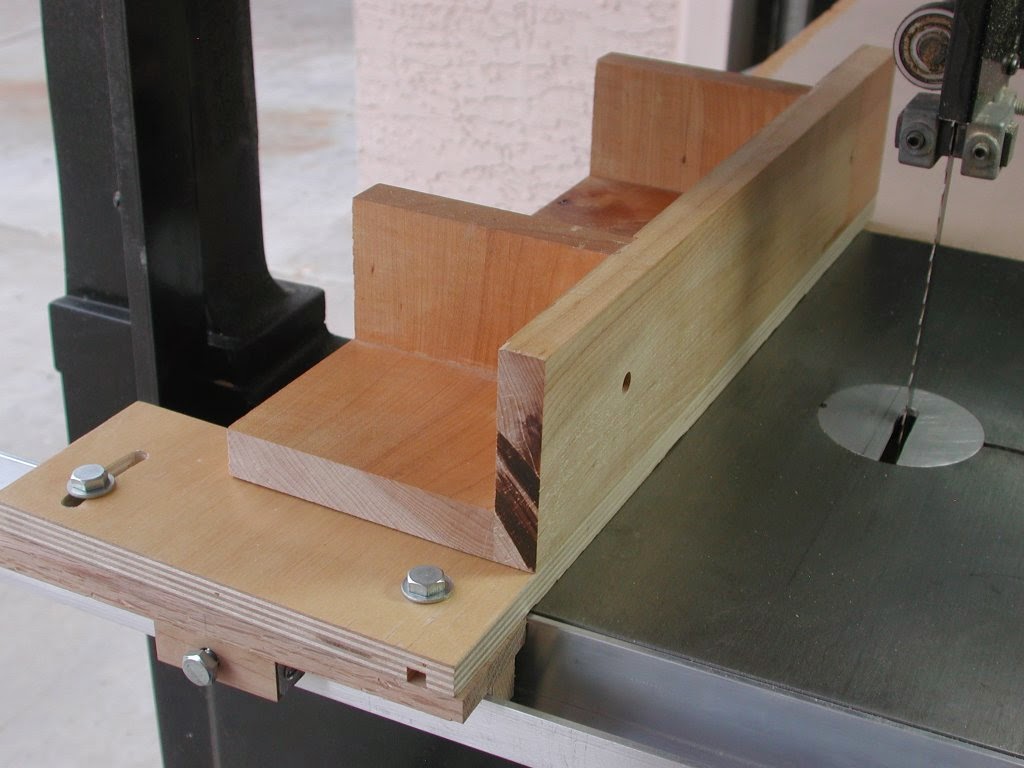Sunday, March 1, 2015
Small Parts Storage Trays
Here’s yet another way to store nuts and bolts and screws and whatnot. These trays are made from scraps of 1/4” MDF and 1/8” tempered hardboard left over from other projects.
I sized them so they will sit up on edge in a couple of the drawers in my work bench. That makes it easy to remove any one by itself while still utilizing most of the space within each drawer. For that to work, though, the sliding lids have to fit nicely against the dividers so the hardware doesn’t get all mixed up when the tray isn’t sitting flat.
You could also store them like books on a shelf.
To keep track of which tray contains what, I made an Excel spreadsheet on my computer that lists the contents of each tray. I keep a printed copy in the drawer with the trays so I can find the correct tray pretty quickly when I want to deposit or withdraw some random bit of treasure.
Monday, February 23, 2015
Biesmeyer-Style Bandsaw Fence - Free Plan
I have a Taiwanese clone of the Delta 14" bandsaw that I bought used without a fence. That didn't bother me too much at first, because I thought that I would be using it to cut curves most of the time, and that when I did need a fence, I could just clamp a board to the table. But then I found out how useful a bandsaw is as a ripping machine and for certain kinds of joinery, and how tedious it is to accommodate drift using the clamp-a-board-to-the-table method.
I needed a real fence.
I thought about building the shop made fence described by Patrick Sullivan in Fine Woodworking #210. But when I looked at it closely, the design seemed overly complicated to me. So I set out to build something simpler that would still get the job done. After a couple of false starts, I eventually came up with the Biesemeyer-style fence described here.
I started with a piece of 1-1/4" x 1-1/4" x 1/8" 6063-T5 aluminum channel for the rail. I cut one leg off at 13/16" as shown in this drawing. I then drilled it to match the mounting holes on my bandsaw table and cut a little notch to match the bandsaw's miter slot.
Then I made the "slider" shown in this drawing. It rides to the left and right along the rail and clamps in place with a little bolt. The longish piece on the bottom of the slider registers against the rail to align the slider, while the shorter piece carries a T-nut for the bolt that clamps the slider to the rail. You could use a threaded insert instead of the T-nut if you want. If you look carefully, you'll see a little piece of bent sheet metal that prevents the slider from marring the aluminum rail when you crank down on the bolt. I called this thing the "rail protector", and it's shown in this drawing.
There are also two T-nuts in the holes on top of the slider. These receive a couple of bolts that hold the base of the fence to the slider.
This drawing shows the base of the fence itself. It's cut out on the left side to clear the bandsaw's yoke when the fence is positioned towards the left side of the bandsaw table. The hole and the curved slot nearest the operator accommodate bolts that attach the base to the slider. The curved slot allows the base to rotate in order to adjust for drift.
The other holes in the base have threaded inserts or T-nuts that allow attachment of the auxiliary high fence shown in this drawing. It can be installed in either of two orientations for resawing or to accommodate various workpiece thicknesses.
You might want to use star knobs instead of the bolts that I have shown for the clamp bolt in the slider and the bolts that attach the base to the slider. You might also might want to make the slider and base out of aluminum instead of wood!
I needed a real fence.
I thought about building the shop made fence described by Patrick Sullivan in Fine Woodworking #210. But when I looked at it closely, the design seemed overly complicated to me. So I set out to build something simpler that would still get the job done. After a couple of false starts, I eventually came up with the Biesemeyer-style fence described here.
I started with a piece of 1-1/4" x 1-1/4" x 1/8" 6063-T5 aluminum channel for the rail. I cut one leg off at 13/16" as shown in this drawing. I then drilled it to match the mounting holes on my bandsaw table and cut a little notch to match the bandsaw's miter slot.
Then I made the "slider" shown in this drawing. It rides to the left and right along the rail and clamps in place with a little bolt. The longish piece on the bottom of the slider registers against the rail to align the slider, while the shorter piece carries a T-nut for the bolt that clamps the slider to the rail. You could use a threaded insert instead of the T-nut if you want. If you look carefully, you'll see a little piece of bent sheet metal that prevents the slider from marring the aluminum rail when you crank down on the bolt. I called this thing the "rail protector", and it's shown in this drawing.
There are also two T-nuts in the holes on top of the slider. These receive a couple of bolts that hold the base of the fence to the slider.
This drawing shows the base of the fence itself. It's cut out on the left side to clear the bandsaw's yoke when the fence is positioned towards the left side of the bandsaw table. The hole and the curved slot nearest the operator accommodate bolts that attach the base to the slider. The curved slot allows the base to rotate in order to adjust for drift.
The other holes in the base have threaded inserts or T-nuts that allow attachment of the auxiliary high fence shown in this drawing. It can be installed in either of two orientations for resawing or to accommodate various workpiece thicknesses.
You might want to use star knobs instead of the bolts that I have shown for the clamp bolt in the slider and the bolts that attach the base to the slider. You might also might want to make the slider and base out of aluminum instead of wood!
Subscribe to:
Posts (Atom)














